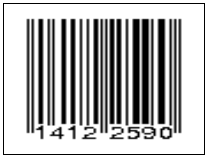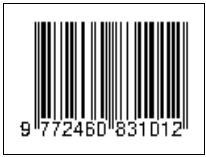Literacy activities in teacher learning planning for Indonesian language subjects in middle schools
Downloads
Strengthening literacy competency is an effort to improve the quality of students in facing future challenges. The rapid flow of information has consequences for humans to be able to choose and sort information that is useful or beneficial for improving their welfare. For this reason, literacy competency is an important skill to be part of learning activities in educational institutions. Educational institutions are strategic institutions for strengthening literacy competency. In this regard, good and effective planning prepared by teachers must ensure that it contains activities that support the learning process that strengthen literacy competency. For this reason, this study examines literacy activities in the planning of Indonesian Language Subjects with a qualitative approach. Data were obtained from documents in the form of RPP and teaching modules from teachers who had been trained in literacy by the Directorate of Junior High Schools, Ministry of Education, Culture, Research and Technology. The results show that the activities in these steps show a variety of activities that are interpreted as literacy competency strengthening activities. Potential strategies that emerge from learning steps vary because they are influenced by learning objectives and topics. Disposition can be accommodated in the sense that the formation of students’ behavioral dispositions is potentially easily formed. This depends on the implementation of continuous strategies in every learning process.
Downloads
Ayyanar, K., & Thirunavukkarasu, A. (2018). Information literacy: An overview. Conference: Role of Libraries in Creating a Knowledge Society (SALIS). https://www.researchgate.net/publication/339676273
Dakin, C. (2013). The effect of comprehension through close reading. St. John University
Dewey, J. (1938). Experience and education. Macmillan
didiharyono, & Qur’ani, B. (2019). Increasing community knowledge through the literacy movement. To Maega Jurnal Pengabdian Masyarakat, 2(1), 17–24
Fanta-Vagenshtein, Y. (2011). Literacy and second language intervention for adult Hebrew Second Language (HSL) learners. Journal of Language and Literacy Education, 7(1), 79–94
Feekery, A., & Jeffrey, C. (2019). A uniquely Aotearoa-informed approach to evaluating information using the Rauru Whakarare Evaluation Framework. Set: Research Information for Teachers, 2, 3–10. https://doi.org/10.18296/set.0138
Kern, R. (2000). Literacy and language teaching. Oxford University Press
Klieme, E., Hartig, J., & Rauch, D. (2008). The concept of competence in educational contexts. In J. Hartig, E. Klieme, & D. Rauch (Eds.), Assessment of Competencies in Educational Contexts (p. 3). Hogrefe & Huber Publisher. https://www.researchgate.net/publication/232495759
Küçükoğlu, H. (2013). Improving reading skills through effective reading strategies. Procedia-Social and Behavioral Sciences, 70, 709–714. https://doi.org/10.1016/j.sbspro.2013.01.113
OECD. (2019). PISA 2018 Assessment and analytical framework. OECD Publishing. https://doi.org/10.1787/b25efab8-en
Sahiruddin, S., Junining, E., Ubaidillah, M. F., & Len, M. C. (2022). Does reading correlate with students’ critical thinking? A bridge to literacy practices. International Conference on Madrasah Reform (ICMR 2021), 367–373. https://doi.org/10.2991/assehr.k.220104.054
Sparks, J. R., Song, Y., Brantley, W., & Liu, O. L. (2014). Assessing written communication in higher education: review and recommendations for next-generation assessment. ETS Research Report Series, 2014(2), 1–52. https://doi.org/10.1002/ets2.12035
Weinert, F. E. (2001). Concept of competence: A conceptual clarification. In D. S. Rychen & L. H. Saganik (Eds.), Defining and Selecting Key Competencies (pp. 45–65). Hogrefe and Huber Publishers
Copyright (c) 2025 Pidekso Adi, Imam Suyitno, Titik Harsiati, Imam Agus Basuki

This work is licensed under a Creative Commons Attribution-ShareAlike 4.0 International License.

This work is licensed under a Creative Commons Attribution-ShareAlike 4.0 International License.























